St. Louis Blues Top Ten Players At Center

The St. Louis Blues have had some issues up the middle throughout their history. However, despite this, they have had some very talented centers through their years as well.
So, the NHL Network is doing some list shows during the dog days of the offseason and they are starting with the top 20 centers, wingers, defenders, etc. in the game today. Why not springboard off that and look at the Top-10 St. Louis Blues centers of all?
The Blues have an interesting dichotomy with the man up the middle. Throughout their history, the lack of a great center or, at least, depth at the position has held them back.
Despite this, the Blues have had plenty of talented players at the center position. The main problem has been getting them on the roster at the same time.
As you go through the list, it will be more apparent that players came from too far apart in their eras. If they had crossover with other players, it was almost never during the primes of their careers.
Such is the way of the St. Louis Blues luck. Anyway, let us look at some of the best Blues to play up the middle.
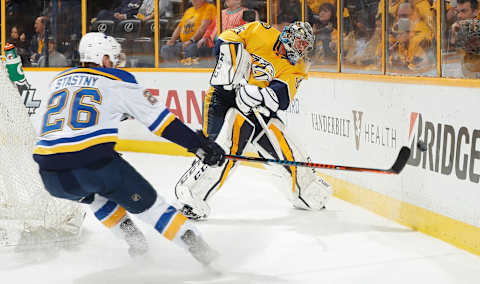
10. Paul Stastny
Whether or not someone thinks Paul Stastny was worth the money paid to him is their own matter. That’s not what we are here to discuss.
What cannot be denied is that Stastny was a good center. We all expected very good to great, but Stastny was still quite good.
Stastny averaged 43 points per season while in St. Louis, which is a number brought down by injury and trade. The one time Stastny managed to play a full season, he scored 53 points. Unfortunately for Blues fans, that was the year he was traded and played 19 regular season games with Winnipeg.
Stastny never lived up to the hype of coming home to St. Louis or the contract he signed. He also had too much pressure put on him to be a number one center when the team lacked depth down the middle and his partnership with Vladimir Tarasenko never took off.
Despite his detractions, he was a solid representative of St. Louis and played hard for the Blues.
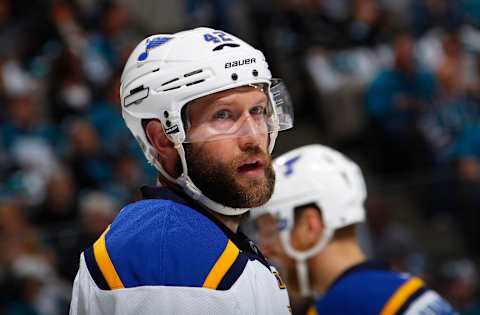
9. David Backes
David Backes has become somewhat of a lightning rod in recent years, especially since his departure. Like Stastny, he gave a lot to the team but did not manage to produce up to the level that so many thought was possible.
The main difference between Stastny and Backes was time of service and a few blips overall. Backes was in St. Louis for 10 years as opposed to Stastny’s four. Backes was also made the captain at a relatively young age.
Backes had plenty of ups and downs in his career, but those basically mirrored the ups and downs of the team as a whole. Not coincidentally, Backes’ best individual season was just prior to becoming team captain – he scored 62 points.
If we take out all our personal beliefs, Backes turned out to be a solid player. Like Stastny, he was asked to do more than his talents were able to support. In reality, Backes should have been a second line center for most of his career. Even if that’s where the team played him, they still looked to him to be both a leader and a scorer. He would have been better suited to focus on one or the other.
Regardless, Backes’ numbers speak for themselves. He put up an average of 46 points per season, but that could have been higher. Only his first, second, last and a work-stoppage shortened season made him fall short of 50 points in a season.
Like many before him, including Brett Hull, his act had grown a bit stale by the end. Even so, it cannot be denied that he bled for his team and gave everything he had.
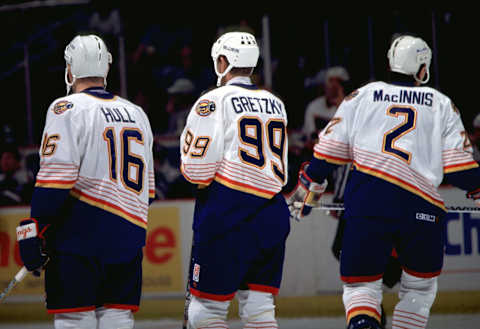
8. Wayne Gretzky
It almost odd that Wayne Gretzky be placed on this list. He did not even play half a season with the St. Louis Blues. Regardless of this fact, he is still fondly remembered in St. Louis. He also has a home in the area. Some of that has to do with his wife, but also because he became endeared to the city in his short time here.
If not for Mike Keenan, Gretzky might have, if not likely would have, finished his career with the Blues. Instead, he moved on to New York for his final three years.
While his time with the Blues was short, he still showed how great he was even in decline. In Gretzky’s final years, he never quite looked like the Great One, but he was still better than the majority of the league.
In 18 regular season games with the Blues, Gretzky still managed to get 21 points. He scored 16 points in the playoffs in 13 games. Both were widely considered disappointments, but in retrospect, scoring more than a point per game is impressive no matter how you slice it.
Gretzky’s only real “failing” was never to bring a championship to any team other than the super squads in Edmonton. That was not his fault, nor was his departure from St. Louis.
In the end, even if it was not his normal numbers, Gretzky’s final years would have been more than welcome with the Blues. Instead, we can only ponder the what-if’s.
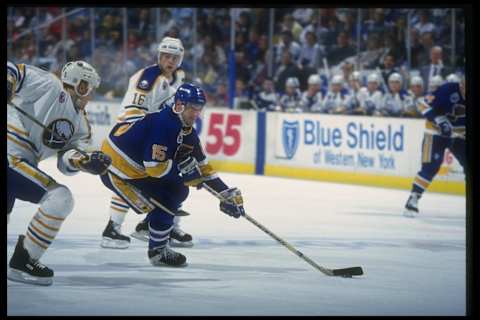
7. Craig Janney
Like so many of the problems plaguing the men up the middle on this list, Craig Janney had circumstances go against him. As a player, he was top notch. It was only behind the scenes issues that held him back or prompted his departure.
Let us not focus on sordid tales, though. Janney, as a player, was a fantastic centerman.
After several good seasons in Boston, Janney broke out in St. Louis. He scored 36 points in 21 games after the trade deadline. Then, he exploded for 106 points in 1992-93. The team swept an intensely talented Chicago team and fell to Toronto in seven games that year.
Janney had injuries and personal issues the following year, but still managed 84 points. That was essentially the end of his St. Louis career.
Like many, his flame in St. Louis was brief but bright. If you take off the ice issues out of the equation, Janney’s main flaw was only that he was constantly compared to Adam Oates.
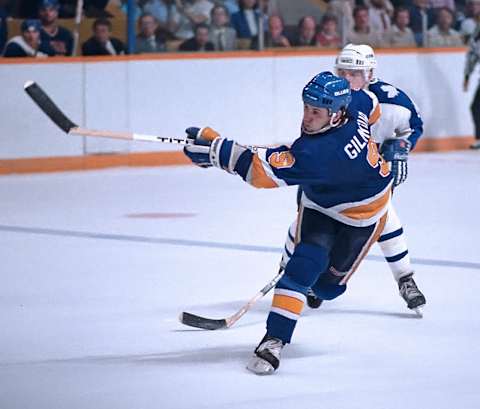
6. Doug Gilmour
There seems to be a persistent theme with these players, including number six, Doug Gilmour. They all had relatively brief careers in St. Louis and several had exits under less than ideal circumstances.
Like Janney, Gilmour was basically forced to leave by things happening off the ice. We can argue about whether that was right or wrong, but it happened.
As a performer, Gilmour had few equals. In his very first three seasons as a professional, Gilmour scored over 150 points. In his fourth year with the Blues, he almost doubled that with a year of 105 points and 42 goals.
Also like Janney, that would sadly be the pinnacle of his Blues career. He would score 36 goals and 86 points the following year. After that, it was off to Calgary where he would win a Stanley Cup and then to Toronto.
Gilmour finished off his career with several other teams. That was somewhat odd for a player so talented to play for so many teams, but he began it all with the Blues. Despite successes with other teams, he only managed more points in Toronto. We can all wonder the what-if’s, but Gilmour shined brightly with the Blues.
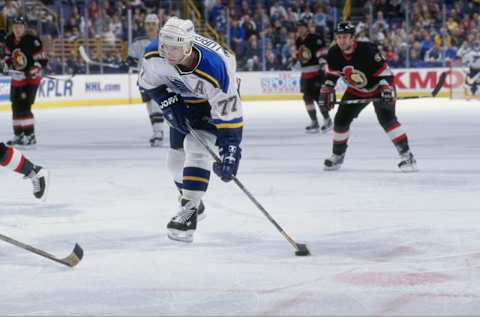
5. Pierre Turgeon
Like so many others on this list, Pierre Turgeon is almost forgotten. In the general fan base – i.e. not the hardcore – fans think of Gretzky as a Blues member more than Turgeon. While Gretzky’s overall career was greater, that is a shame because we forget how good Turgeon was in St. Louis.
Turgeon played for five seasons with the Blues. He played more games with St. Louis than any other team in his career, scored more assists and points as well. The only team he scored more goals with was the New York Islanders.
Turgeon finished the St. Louis portion of his career with 134 goals, 221 assists and 355 points. He currently ranks in the top-15 of all Blues point scorers.
Turgeon is also ranked in the team’s top-15 for assists as well. He does sit a few spots behind Backes, but Turgeon played in 400 fewer games with the Blues than Backes and only trails the big man by about 34 assists.
Playing with Brett Hull definitely helped Turgeon’s numbers in St. Louis. Regardless of that, he was a solid player with the team and was a big reason Pavol Demitra scored plenty of goals.
He was a better scorer than most remember too. He came up in big situations, scoring 25 game winners with the Blues.
Turgeon gets lost among other big names, but he was one of the best and most consistent during his time here.
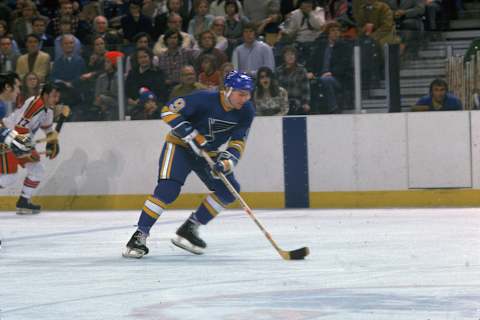
4. Red Berenson
For fans that have been around since the beginning, it is almost impossible not to think of Red Berenson when you talk about the Blues.
Berenson helped build those original teams, though he was not a “true” original member. Berenson came to St. Louis in the 1967-68 season from the New York Rangers after 19 games. He ended up with 22 goals and 54 points in 55 games with the Blues that year.
He spent parts of the first four seasons in team history right in St. Louis. In that short time, he amassed 242 points with the Blues, just in his first run. He was named The Sporting News’ best player in the Western Division each of the team’s first three years.
St. Louis made what some considered a mistake at the time, trading him away to Detroit. It’s difficult to argue in hindsight since the team got Garry Unger, but still.
Berenson came back to St. Louis toward the end of his career. Even in his mid-to-late 30’s, he added another 165 points with St. Louis.
The Red Baron ended his St. Louis career with 172 goals and 412 points. He is still in the top-10 in team scoring, though a couple of today’s players have him in their sights.
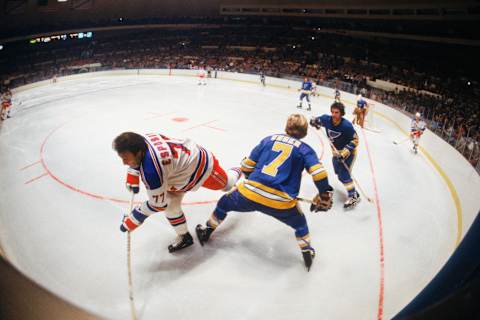
3. Garry Unger
I kid about the hair in the teaser, but by today’s standards Garry Unger stands out about as about as 1970’s as you can get.
While it is always hard to get over the shock and resentment in the moment, the Blues actually have a very good history of trading away some good players and getting some very good to great ones in return. Shanahan for Pronger, Housley for MacInnis, Ramage for Hull, Federko for Oates, etc. The same happened with Unger.
Unger had the misfortune of having to pick up where the legend of the Red Baron had left off. He wasted little time showing the St. Louis crowd what he could do.
He finished with a point per game average, with 29 points in 28 games with St. Louis after the trade. He then rattled off 70-plus point seasons in four of his next five years. That season he failed to get 70 points, he finished with 68.
While Unger’s point totals hit a sharp decline in the mid-to-late 70’s, oddly enough his goal totals did not. Unger never failed to score 30 goals with the Blues outside of that short portion when he was traded here from Detroit.
Unger was also the league’s Iron Man, never missing a game between February 24, 1968, and December 21, 1979. The only reason he missed a game to end the streak was because Atlanta’s genius coach decided to bench him.
Unger is still in fourth place for the Blues in all-time scoring. He will remain there for quite some time as Vladimir Tarasenko is still over 200 points behind Unger’s 575 Blues points.
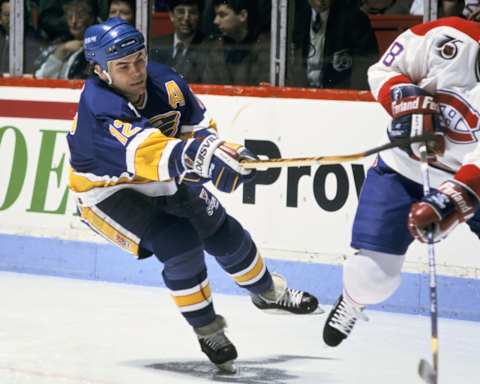
2. Adam Oates
We all remember Hull and rightly so, given he is the best pure goal scorer many of us have ever seen. He is definitely the Blues best pure scorer of all time, even if he remains behind one of our other guys on this list in total points.
However, in Hull’s formative years with the Blues, it was the Hull and Oates connection that made the team so potent. Fans of the Blues from that era are always left with gigantic what if’s had that duo been left together instead of being more like ships passing in the night.
Adam Oates had been a decent player until the point when he was traded to the Blues from Detroit. However, he instantly made a connection with the Blues best scorer and they took off for heights unimagined.
After a previous career high of 78 points, Oates scored 102 points in his first season with the Blues. He then topped that with a 115 point performance in 1990-91.
Sadly, that was it. It was a brief flash and then it was over.
Oates had 69 points with the Blues the following season before the team traded him. Even sadder, it all ended because of contract squabbles.
Oates signed a new contract prior to the 1991-92 season. He then felt slighted by the offers given to other players the Blues brought in. Oates threatened to walk out, the fans turned on him, since this was an era when players never won the public sentiment battles, and the trade happened.
We’ve gone over how well Janney played in his stead. However, there was not that same chemistry that Oates and Hull had. While the Blues always had other problems, you just can’t help but wonder if those two could have let them to a championship if they stayed together.
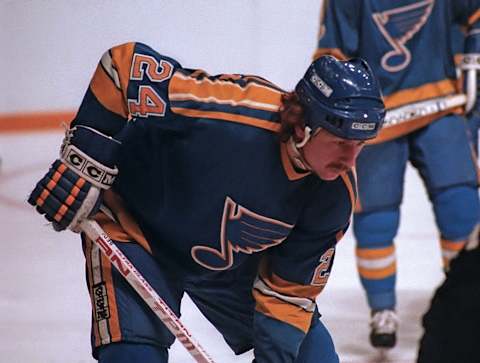
1. Bernie Federko
There really was not any other choice for the top center in Blues history. Bernie Federko could make an argument to be in the top spot in team history, in general, but we’ll leave that for another time.
Ernie Banks might not be the absolute best in Chicago Cubs’ history, but he’s known as Mr. Cub. Similarly, Federko might as well be called Mr. Blues, even if there might have been other players in team history with bigger names.
There were certainly some that had better individual skills. None could match Federko’s overall talents, consistency and longevity with the Blues.
Federko is still number one for the team in points and it seems implausible, if not impossible that anyone will ever pass him. For example, if Tarasenko kept up his current pace, he would still fall over 300 points shy of Federko’s total.
Federko scored an amazing 1.16 points per game during his Blues career. Only Oates, Hull and Janney had a higher point per game average and, of course, only Hull managed to top Federko on any kind of scoring list (goals).
Federko did have the advantages of playing with some of the team’s best players of all time. He spent a couple seasons with Unger, a couple years with Hull and some good players in between.
However, those top players were with Federko on the book-ends. During that big middle portion, it was mainly Federko at the top, outscoring the next guy on the Blues by almost 20 points or more.
During those thinner years in the late-70’s and early 80’s, Federko kept the Blues alive. While St. Louis fans are some of the best, had the team really gone in the basement, which was possible without a great player, they might have left. Federko kept the team at the forefront of the public mind.
When you have a player scoring 90-plus points in seven of eight years, that becomes must see hockey. Of course, Federko will deflect and point to other great players he was with. But it is that same mild-mannered approach that might have kept him out of the Hall of Fame for longer than deserved that endeared him to the St. Louis area.
Like all team greats – like, dare I say again, Ernie Banks, Bernie is known as much by his first name now as his last. It’s an honor earned by hard work, sweat and plenty of tears. We can only hope that, unlike Banks, our Mr. Blues is here when they finally bring a title to the team he worked so hard for.
Next. Blues All-Decade Team: 1990's. dark
So, that’s our list. Any ones we missed out on? What would your ranking be? Let us know.